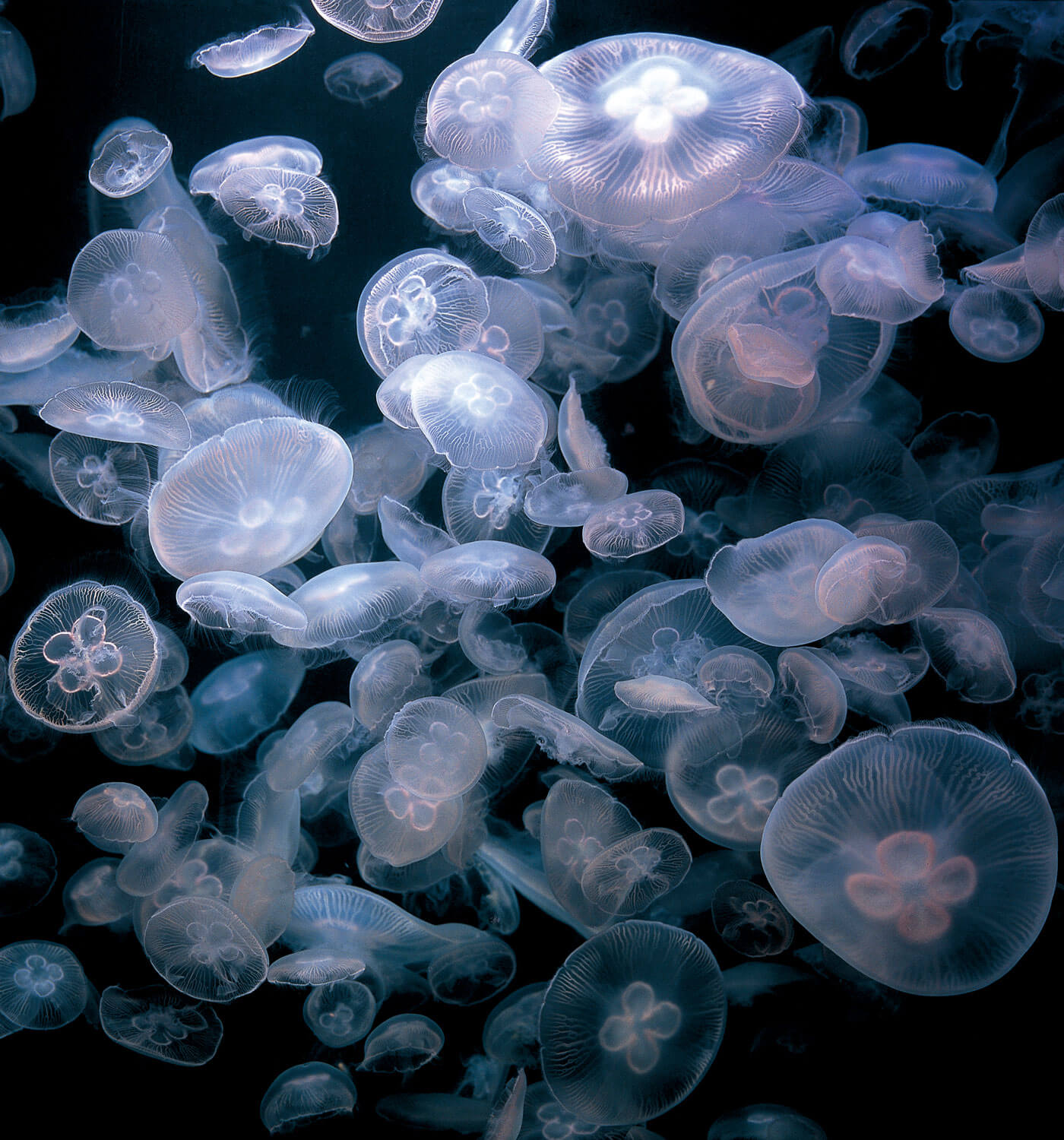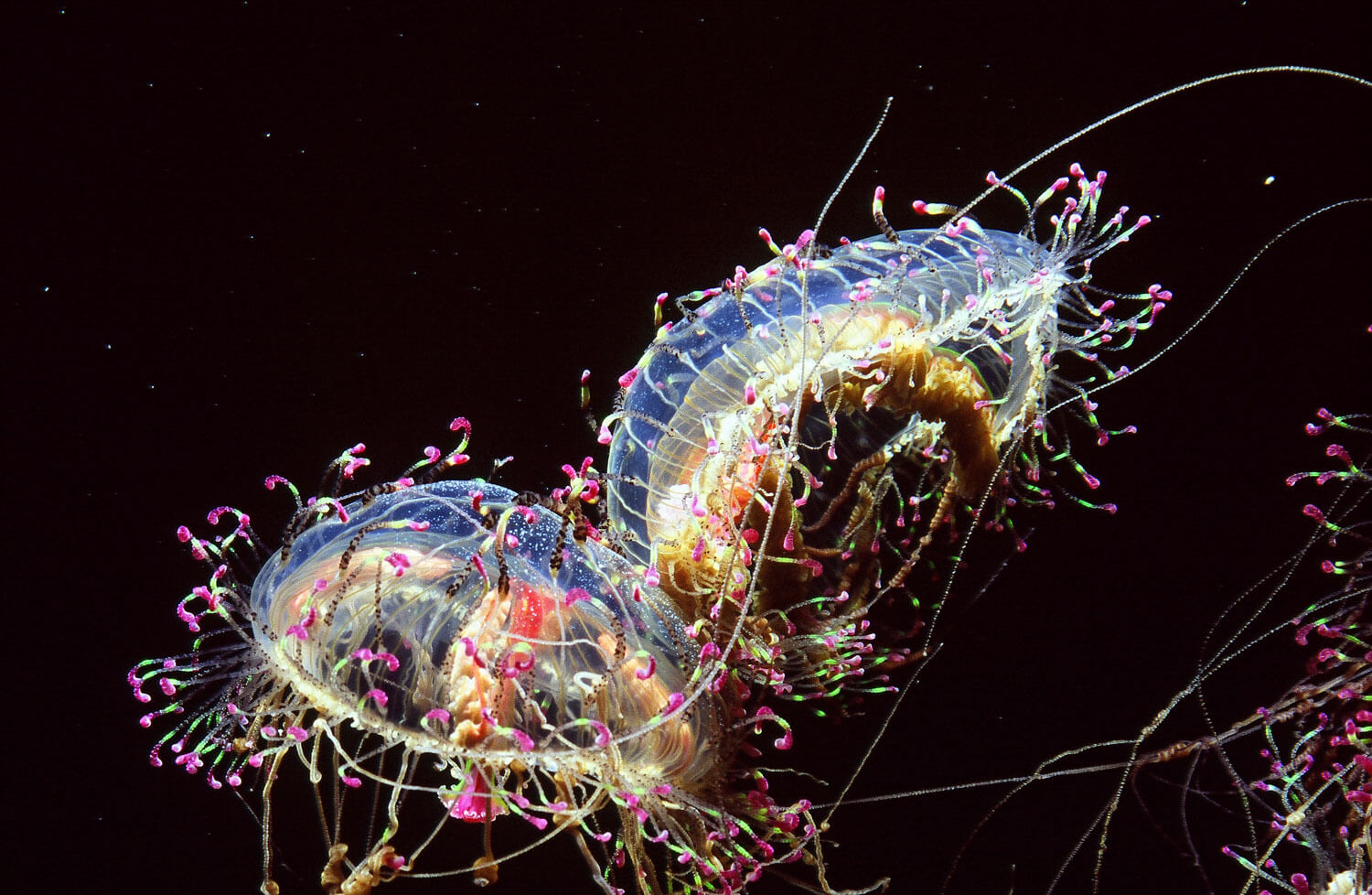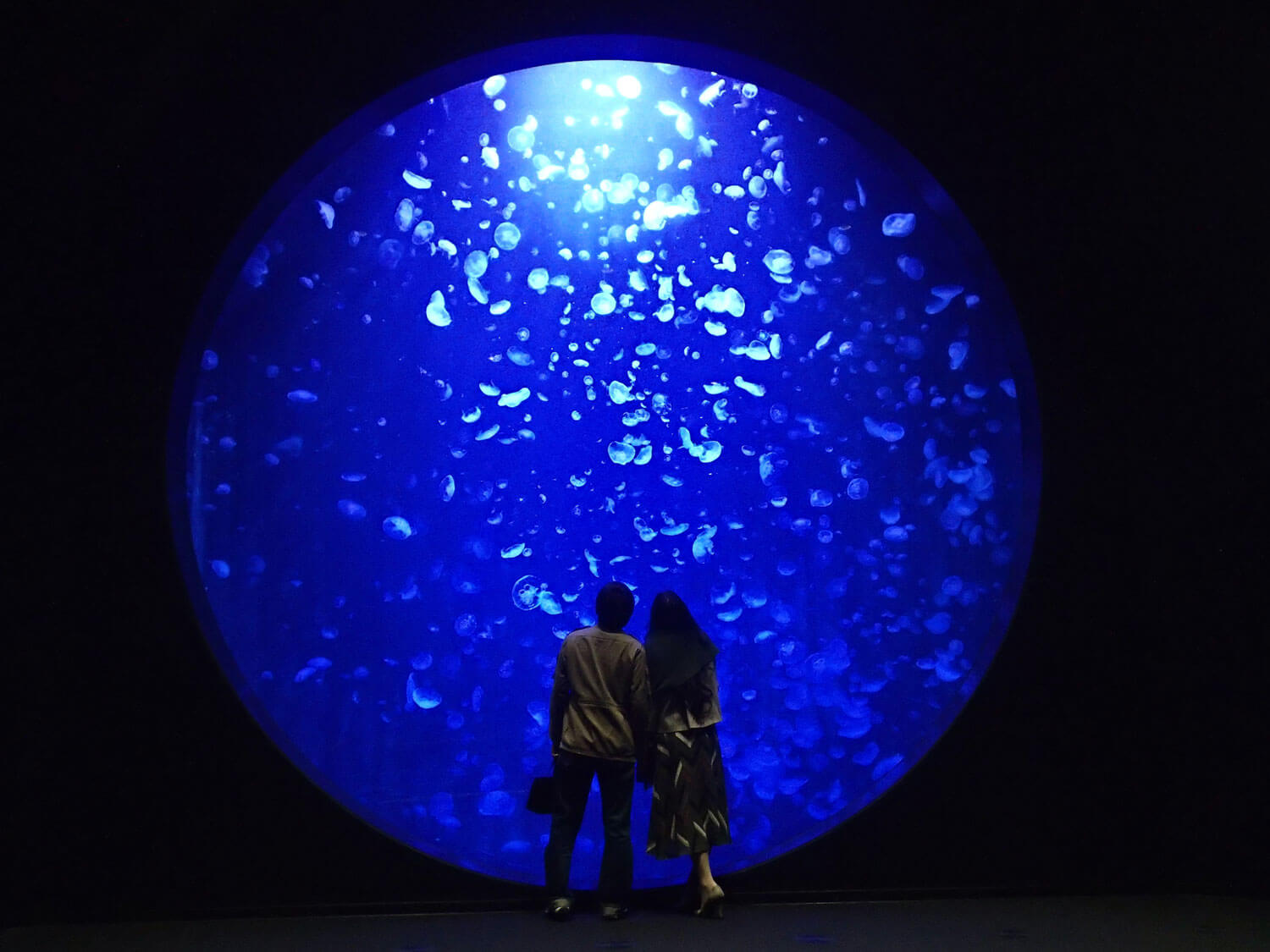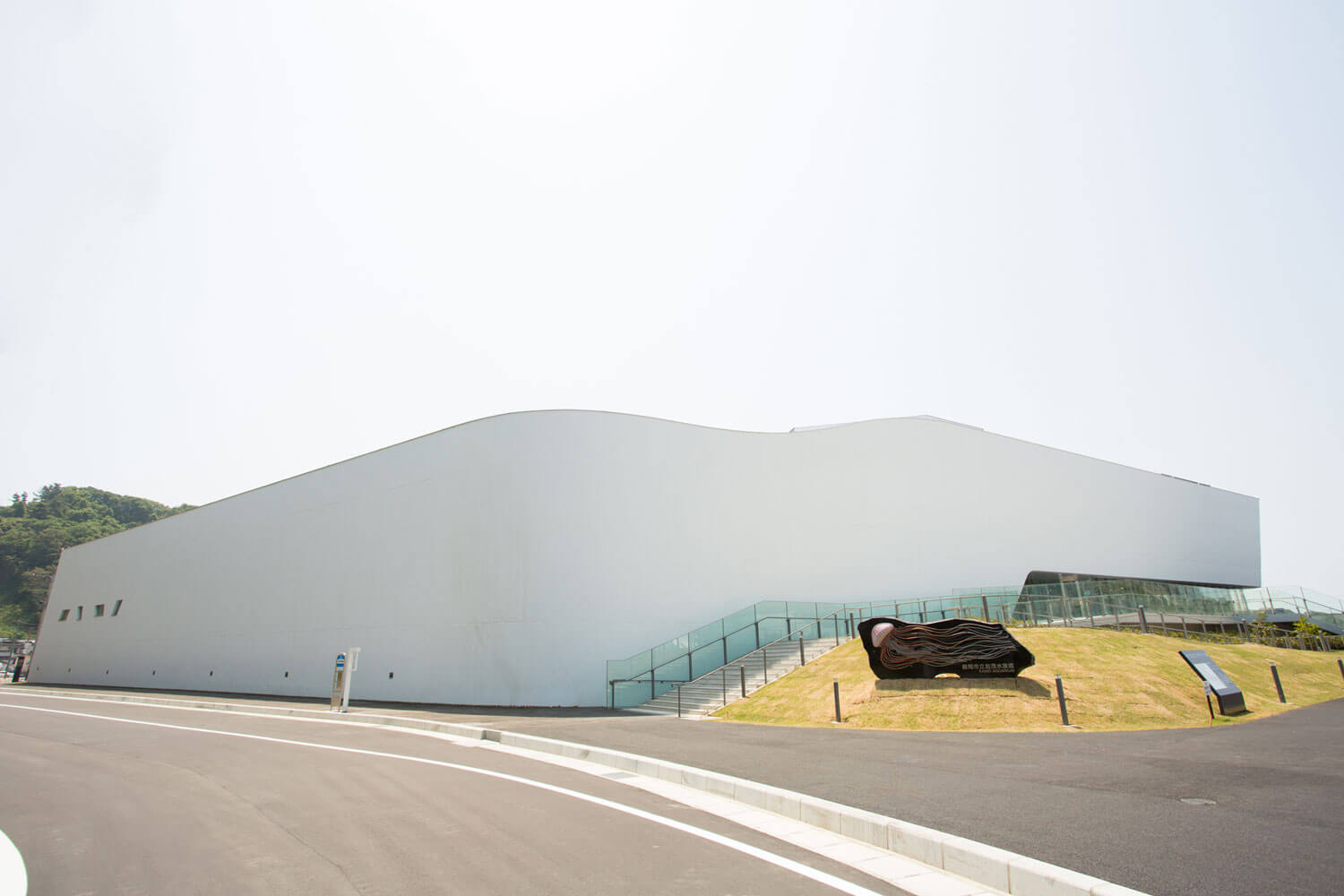Japan’s Largest Jellyfish Aquarium Saved by a Nobel Prize
The discovery of a little-known protein produced by a species found in the Kamo Aquarium helped to bring back visitors.

© Kamo Aquarium
The magic happens when they move, surreptitiously. Jellyfish and their graceful, hypnotic movements are the main attraction at the Kamo Aquarium. Situated facing the Sea of Japan in Tsuruoka and renovated in 2014, it holds the title of largest jellyfish aquarium in the world.
No fewer than fifty different species, from tiny little nudas to gigantesque Nomura jellyfish measuring as long as two metres, can be found there. The visit begins with an introduction to the different local species of fish. Visitors can touch certain specimens, like sea cucumbers (namako) and starfish (hitode). It continues with the various jellyfish tanks, one of which is five metres deep.
Presence of unique specimens
Built in 1930, the aquarium had been struggling to attract visitors for several years. It was thanks to the winner of the 2008 Nobel Prize for chemistry that numbers started to pick up again. Osamu Shimomura, a chemist and marine biologist who died in 2018, was recognised for his discovery of green fluorescent protein (GFP), found in Aequorea victoria jellyfish. At the time, Kamo Aquarium was the only place that bred this species. As a result, visitor numbers increased sevenfold.
More information on Kamo Aquarium can be found on its website.

© Kamo Aquarium

© Kamo Aquarium

© Kamo Aquarium
TRENDING
-
The Tattoos that Marked the Criminals of the Edo Period
Traditional tattoos were strong signifiers; murderers had head tattoos, while theft might result in an arm tattoo.

-
Paris, Tokyo: Robert Compagnon
With his co-chef and talented wife, Jessica Yang, Robert Compagnon opened one of the top new restaurants in Paris: Le Rigmarole.
 3:31
3:31 -
Chiharu Shiota, Red Threads of the Soul
Last year, more than 660,000 people visited the retrospective 'Chiharu Shiota: The Soul Trembles' exhibit at the Mori Art Museum.

-
‘Before Doubting Others, Doubt Yourself. Who Can Truly Say a Dish Isn’t What It Used to Be?’
In ‘A Non-Conformist’s Guide to Surviving Society’, author Satoshi Ogawa shares his strategies for navigating everyday life.

-
The Story of Sada Yacco, the Geisha who Bewitched Europe
Described by Dazed magazine as the first beauty influencer, she has been restored to her former glory since 2019.





